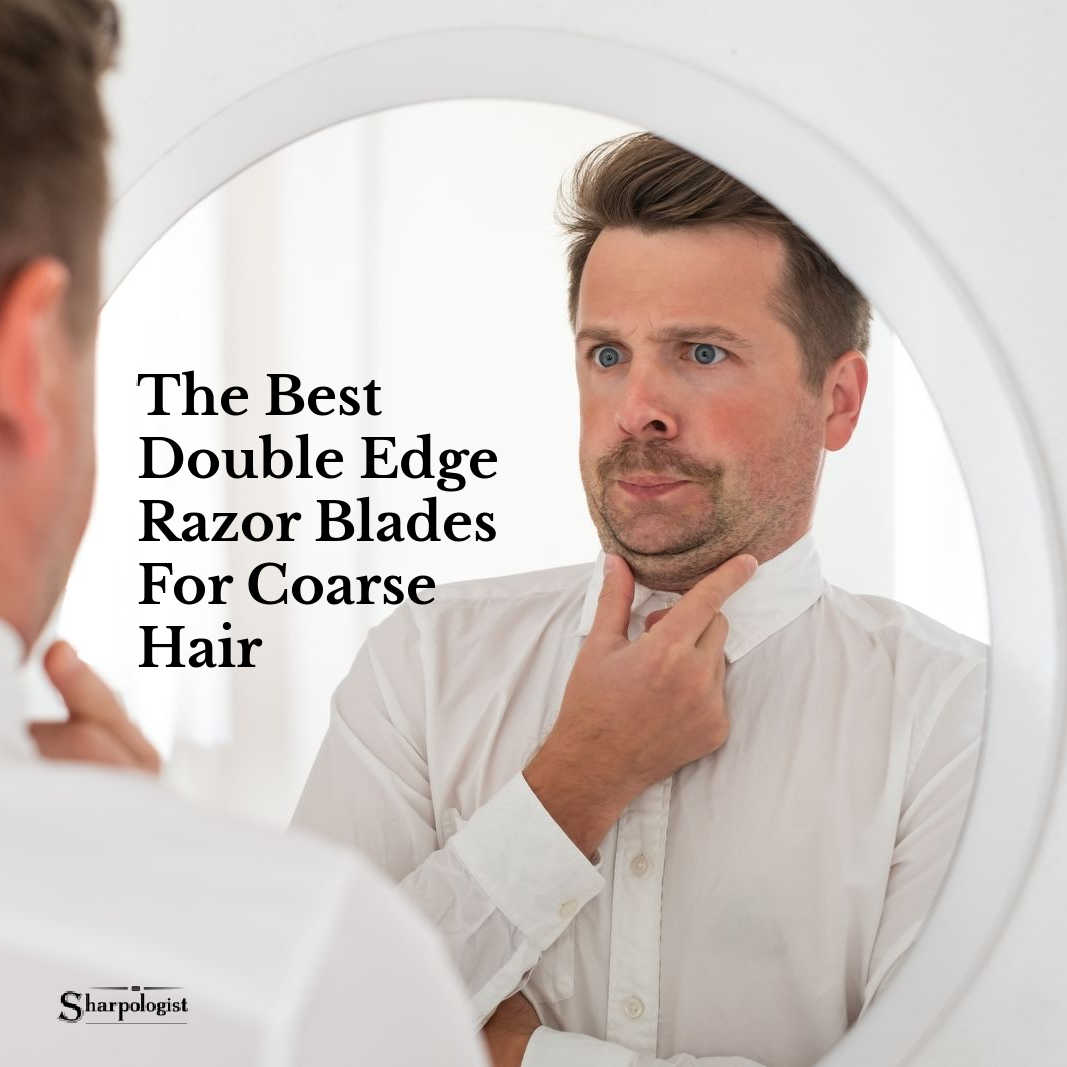
The best double edge razor blades for coarse hair are the Astra Superior Platinum, BIC Chrome Platinum, Feather Hi-Stainless Platinum, Gillette Nacet, and Gillette Silver Blue. These blades are known for effectively cutting through thick, coarse hair while providing a smooth shave.
But…and it is a big BUT…there are some factors here that make the list less cut-and-dried than it may appear.
In this post I’ll dive into the characteristics of coarse hair and unique challenges that come with it while shaving, discuss the importance of choosing the right razor and blade to ensure a comfortable shave and prevent any skin irritation, and discuss some of the top double edge razor blades that are good for coarse hair.
Key Takeaways
You may have a love-hate relationship with your coarse facial hair. It grows fast and thick, but shaving can be a nightmare.
- Coarse hair is thicker and stronger, and tends to grow at a slower rate compared to other hair textures.
- Coarse hair can cause painful razor burn, irritation, and ingrown hairs.
- Different razor blades offer varying levels of sharpness and smoothness.
- It’s crucial to use proper shaving techniques, including using a good razor and suitable blade, as well as following a good pre-shave routine to soften the hair.
Understanding Coarse Hair and Shaving Challenges
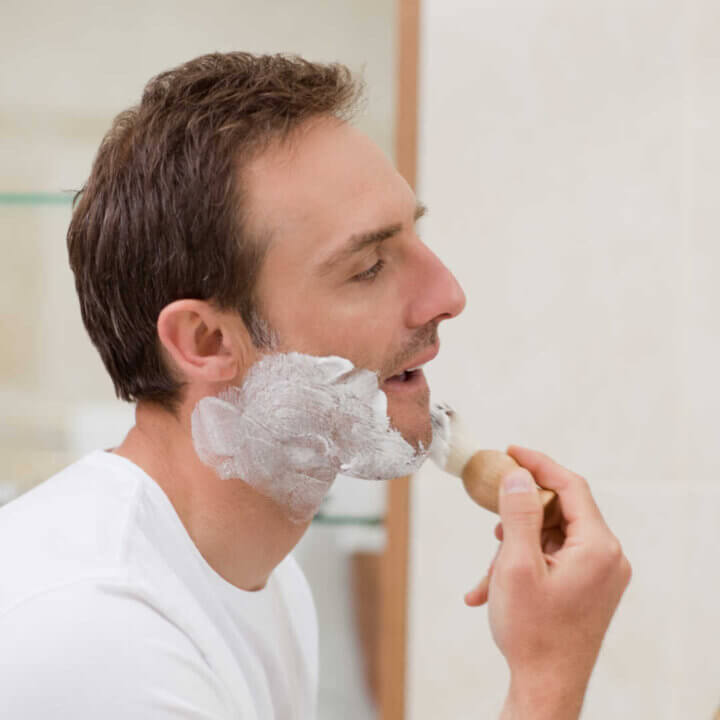
Coarse hair requires a razor blade with sharpness and durability to effectively shave. Different types of coarse hair may require different razor blades for optimal results. Proper preparation, such as prepping the skin and facial hair, is important for a smooth shave with coarse hair too. By using the right razor blade and practicing proper techniques, individuals with coarse hair can achieve a comfortable and irritation-free shaving experience.
Characteristics of Coarse Hair
Having coarse hair comes with its own set of unique characteristics. Unlike other hair types, coarse hair is thicker and stronger. Additionally, it tends to grow at a slower rate compared to other hair textures. This means that the shaving process may take longer for individuals with coarse hair.
For those of us getting older, gray facial hair lacks pigment, which gives it a gray or white color. Gray facial hair can be coarser and wirier compared to the same hair when it was pigmented. This change in texture is often due to a decrease in the production of natural oils as we age.
Unique Shaving Issues for Coarse Hair
Coarse hair presents unique challenges when it comes to shaving. Due to its thickness it requires a razor blade that can handle its robust nature. It can be more resistant to cutting, making it necessary to use a sharper blade. Using a dull blade can lead to discomfort and irritation during shaving. It’s important to find a blade that can effectively cut through the coarse hair without causing any discomfort.
Another issue that some individuals with coarse hair may experience is ingrown hairs. Coarse hair has a tendency to curl back into the skin, leading to ingrown hairs that can be unsightly and painful. Coarse hair is also more prone to razor burn. To minimize this problem, it’s important to follow a good pre-shave routine to soften the hair, use proper shaving techniques, and use a sharp and suitable razor and blade.
In order to combat these issues, it may be necessary to shave against the grain for a smoother result. Additionally, proper preparation, such as using a good shaving cream and adequately moisturizing the skin, can help minimize irritation.
Why Choosing The Right Double Edge Razor Blade Matters For Coarse Hair

- Efficiency: Coarse hair requires a razor blade that can effortlessly cut through thick strands without tugging or pulling. The right blade will provide a smooth and efficient shaving experience.
- Comfort: Coarse hair can be more prone to irritation and ingrown hairs. A high-quality razor blade will minimize these issues by providing a close shave without causing unnecessary friction or irritation.
- Durability: Coarse hair can quickly dull blades, leading to an ineffective and uncomfortable shave. Choosing a durable razor blade will ensure that it stays sharp for longer, saving you time and money in the long run.
- Precision: Coarse hair often grows in different directions, making it challenging to achieve a clean shave. A razor blade with excellent precision will help you navigate these tricky areas and achieve a smooth and even shave.
Finding the best double edge razor blade for coarse hair may require some trial and error, as everyone’s hair and skin are unique. However, by considering factors such as efficiency, comfort, durability, and precision, you can narrow down your options and find the perfect blade for your shaving needs.
Factors to Consider When Choosing Double Edge Razor Blades for Coarse Hair
When choosing double edge razor blades for coarse hair, it is important to consider factors such as sharpness, blade material, thickness, and angle.
Sharpness
Sharpness plays a pivotal role in defining the overall quality and performance of double edge razor blades for coarse hair. A sharp blade cuts through thick, coarse hair with ease, securing a close shave without any extra force or repeated strokes over the same spot.
For instance, Feather Hi-Stainless Platinum blades are renowned for their superior sharpness and shaving efficiency. This reduces irritation and lowers the risk of ingrown hairs because less skin scrapes occur when using a sharper blade.
However, what feels appropriately sharp to one individual may not feel the same to another as subjective sharpness varies among different users.
Blade Material
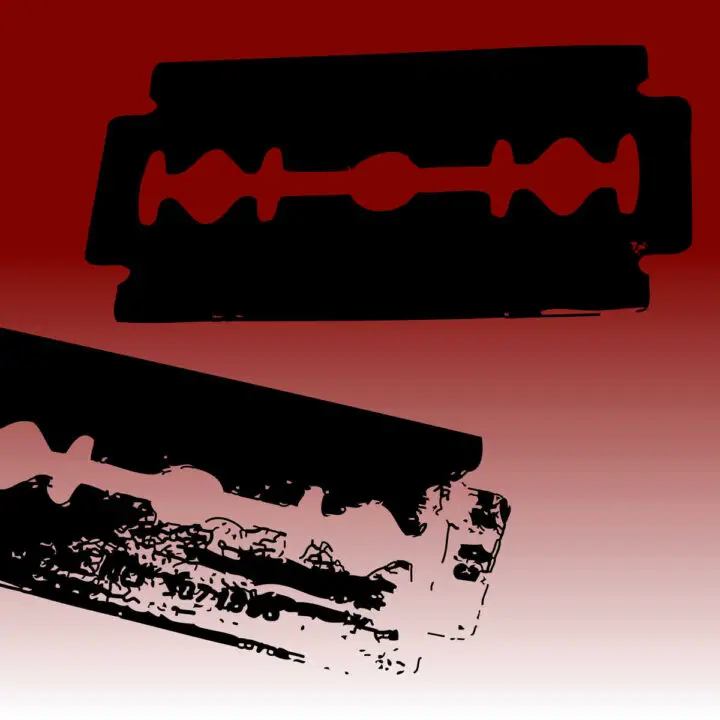
Stainless steel, platinum-coated, and carbon steel dominate the world of razor blade materials. Each differs substantially in terms of sharpness and longevity. Stainless steel is known for its resistance to rusting and corrosion, making it a highly durable choice for wet shaving tools such as razor blades.
Platinum-blended blades are highly sought after due to their exceptional cutting ability and overall performance when dealing with coarse hair. They slide smoothly over the skin, reducing friction while delivering a close shave every time.
On the other hand, carbon steel can offer keen sharpness that can make quick work of stubborn or thick hairs but may require more frequent replacements than its counterparts. Both your personal preference and the characteristics of your hair ultimately determine which blade material will serve you best.
Blade Thickness
Blade thickness plays a role in selecting the perfect double edge razor blade for coarse hair. Thicker blades often offer a more aggressive, effective shave, especially beneficial for tackling coarser hair types.
Nevertheless, too much aggression can lead to irritation or even ingrown hairs if not handled with care. Hence, finding a balance between blade thickness and aggressiveness becomes crucial in preventing skin issues while ensuring efficient shaving of rugged facial strands.
Not all double edge safety razor blades are created equal; their performance can greatly differ across various hair textures depending on their design attributes like durability, flexibility and overall blade quality.
Brand Reputation (And “The Russia Problem”)
A recent issue regarding the “reputation” of some blade brands deserves consideration. There is a large factory in Russia that makes double edge razor blades, including some very popular name brand ones. Among the brands that have been produced in Russia are three of the five blades on this article’s list: Astra Superior Platinum, Gillette Nacet, and Gillette Silver Blue.
Recent world events have included limiting or prohibiting importation of products from Russia, including razor blades to western countries. Gillette has announced that they will be moving production of their Gillette-branded blades to another country (the rumor is China); Astra has moved production to India and blades are just starting to be shipped; the plans of other brands are still in flux.
At the moment there appears to be enough existing inventory to satisfy demand but as stock levels drop and/or brands move manufacturing to other facilities, the specifications and performance characteristics of these blades may change.
Razor And Blade Pairing
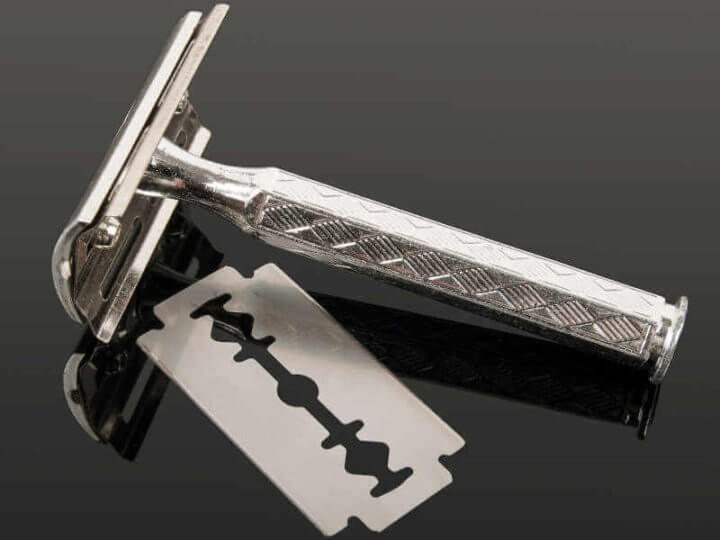
In addition to the design specifications of the blade edge itself, there is another variable that needs to be considered, that of the razor that the blade is inserted into.
The blade angle is a crucial aspect to consider when selecting double edge razor blades for coarse hair. The angle at which the blade meets the skin determines how effectively it cuts through the hair. Related to the angle is how much of the blade’s edge is exposed to the skin. Several razor specifications play a role here:
- Blade Gap: the distance between the blade and base plate of the razor
- Blade Exposure: the blade sticking out and touching the skin from the top cap of the razor (some consider this another way of specifying razor angle)
- Weight of the razor
- Balance of the razor
So an individual razor and blade can interact with each other. This is often a major reason why one brand of blade works great for one person and works terribly for another.
Comments On Recommended Blades (Plus Some Alternates)
As background, my facial hair is relatively “normal” except for the chin area: as I have aged the hair around my chin has started to gray first and has become increasingly difficult to shave. So I started testing blades on that specific area for this article. I also relied on the comments from others who shave under similar circumstances, as well as those with historically coarse, wiry, “grizzed” facial hair.
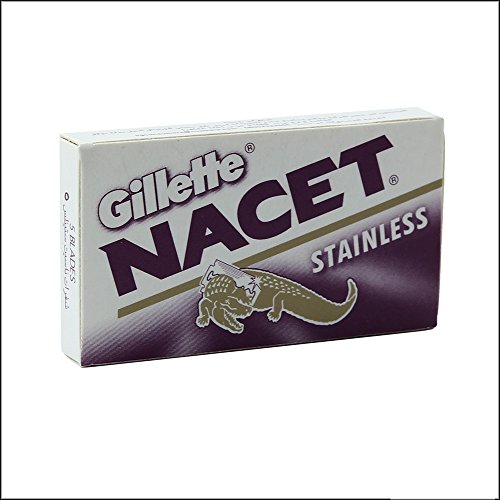
Based on a number of these circumstances, the Gillette Nacet blade is most-often mentioned as the best double edge blade for coarse facial hair. Comments often mention the blade’s sharpness (but not “too sharp”), durability, and comparatively low cost. Unfortunately this blade has been produced in Russia so, as mentioned earlier, this blade’s characteristics may change as alternate manufacturing facilities come online.
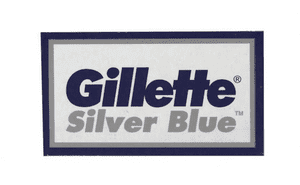
The Gillette Silver Blue blades seem to work well for those with a “consistently” coarse stubble, but less-so when the coarseness is limited to specific areas (like my chin). I find myself siding with those who say they tend to cause irritation in areas with finer hairs. Like the Nacet above, these blades have been produced in Russia so time will tell whether they will perform the same after being produced somewhere else.
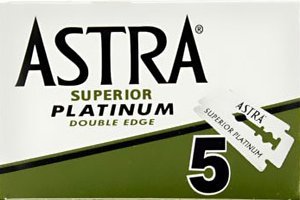
The Astra Superior Platinum (not the Astra Superior Stainless) is another frequently recommended blade for those with coarse facial hair. For whatever reason, this blade seems to perform as well as the Gillette Platinum and Silver Blue, but without the irritation. Like the Gillette blades, the Astra blades were produced in Russia. Production has moved to India and new blades have very recently shipped, so it may be useful to determine where a vendor’s stock is from before purchasing.

The Feather Hi-Stainless Platinum blade is a well-known and widely-available double edge razor blade. Feather blades are known for their keen edge that can plow through just about any type of hair. However they have a reputation for having a short lifespan and some regard them as too sharp with a high occurrence of nicks and irritation. They are produced in Japan.
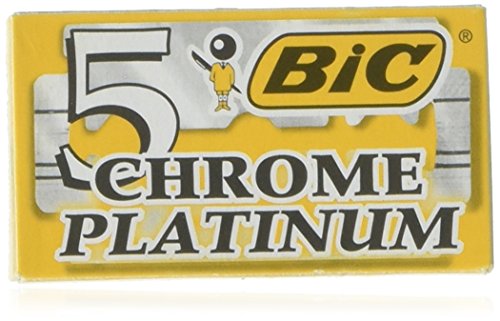
The Bic Chrome Platinum double edge razor blade may be the best combination of sharpness, durability, manufacturing stability, and cost for shaving coarse facial hair on this list. It seems to work best when paired with a relatively “mild” razor (smaller blade gap and blade exposure).
Alternatives?
While the blades mentioned above are the most consistently recommended, I think there are a few others worthy of consideration.
Kai blades are often compared to Feather blades but are less expensive and a little more “forgiving” to the shaver.
Parker blades (Amazon affiliate link) are my personal favorite double edge razor blade and although it may not be quite as efficient at cutting coarse hair compared to the recommended blades above I think it’s an excellent all-around blade.
Lord Platinum blades, produced in Egypt, seem to “fly under the radar” but generally work well for coarse stubble.
Conclusion
Ultimately, finding the best double edge razor blades for coarse hair is a personal experience that requires experimentation and consideration of a lot of different factors. From the sharpness of the blade to its corrosion resistance, every aspect plays a role in achieving a good shave with coarse hair.
Sample packs of different razor blades can be helpful for finding the best blade for your specific type of coarse hair. Factors such as blade sharpness, durability, and even the country of origin (e.g. Russia) can make a difference.
What double edge blades work best for those of you with thick, coarse stubble? Leave a comment below!
Like this article? Please share it!

Hi Mantic,
the Parker blade is manufactured by Derby in Turkey.
Have you also tested the “Derby Premium” blade? what is your opinion? i think it is very similar to the Parker blade, or maybe even the same
Surprised by the inconsistency comments on BIC. I bought 100 a few months ago and they’ve all been similar and superb. Definitely by favourites.
Feathers are probably my no2. Astra Green, Tiger, Personna and London Bridge are the next best respectively. Kai are a difficult fit for some razors.
It’s notable that there’s some difference related to individual razors.
As my 100-pack of Feathers was getting down to the last two tucks, I started considering whether I would stick with Feathers or move on to a different blade. I did have some issues with the Feathers not lasting long. Pushing them past a third shave is risky and they can be aggressive. I’d read good reviews of both the Nacet and the Bic. I bought five of each from an eBay seller so I could compare. While I liked both for the first shave, the quality of the Bics was inconsistent for me. Sometimes even the second shave with a Bic was an unpleasant experience.
I actually found myself smiling during and after my shaves with the Nacets – close and smooth, few if any weepers, and I get great performance through SEVEN shaves. That’s getting enough bang for my buck that I don’t feel the need to push it to its limit; I’ll just change the blade once a week or so. That prompted me to buy a 100-pack.
BTW, my razor of choice is a Parker Semi-Slant (55SL) which got a great review right here at Sharpologist!
I’m glad the Nacets (and other Gillettes) are moving to another country of manufacture – not that China is ideal. I did buy my 100-pack of Nacets from a U.S. seller and am telling myself that they were likely made before Russia invaded Ukraine. They have Arabic writing on the packaging (along with English) and I’m hoping they were in stock for a while somewhere even before the U.S. seller got them. Plus I’m guessing my $14 wouldn’t make much of an impact on the war effort after Gillette and the various middle men got their cuts.
Yeah Gillette Nacet razor blade is it for me too. I am quite surprised you used one SEVEN TIMES and it still performed well all the way!! wow! I use each blade twice (for my head and face shaves) twice a week, and change. That way, the ‘perfect razor blade’ is a constant, and I do enjoy my shaves, recently starting to take it easy and slowly with my Rockwell razor. To me, the combo of the Rockwell and Gillette is just it👌🏾. Happy shaves Paul.
Hey, Mark.
I went grey many years ago. I am unsure if I have ‘”coarse” beard hair. I know I have a difficult time shaving just under my cheekbone. There is always a fine stubble that does not shave easily. I like a BBS close shave. My beard grows fast.
How does a coarse beard feel?
Dartan
I have coarse, abundant, AND fast-growing whiskers. I’ve used all the blades mentioned but my current favorites are Gillette 7o’clock Super Platinum (the Blacks [or Ninjas], made in India).
BTW, when you refer to “blade exposure” I believe you actually mean “blade reveal.” Check out the illustration at . 😉
ALSO
Kai blades are 0.2mm wider than standard blades, so they add a little more blade exposure AND they are more expensive than Feathers.
I have tried all eight blades you list. The Astra SPs were my first blades and the ones I have used most. Feathers work well in my mildest razors, but I agree with the downsides listed. Nacets aren’t all that smooth either.
I stopped buying Russian blades after they invaded Ukraine (though still using what I’d already bought) and started the hunt for alternates – and now my top five, in no particular order, are:
* Bic Chrome Platinum
* Kai
* Dorco Prime (I find them as sharp as Nacets but smoother)
* Personna Platinum (my stock are the older, Israel-made ones)
* Gillette London Bridge
I recently used a Gillette 7 O’Clock “black” from India and was very impressed; I may have to expand to a Top Six if initial results continue over time.
As a guy who has course stubble, I tend to stick with Feather blades in a mild DE razor. BIC chromes are very good and I also like the Gillette Wilkinson sword blades that are made in India, very smooth and sharp. Astra blue are also good but Astra green and Gillette nacet just aren’t quite sharp enough for me.
My first razor blade when I started wet shaving earlier this year was the Rockwell razor blades that my Rockwell razor came with. then I tried the Van der Hagen razor blades that came with my Van Der Hagen razor; before I bought Gillette Nacet razor blades locally in my country Nigeria. The difference was immediately clear; the Gillette Nacet has been the best so far, and I use each blade twice to achieve very excellent face and head shaves, and have made it my go-to razor blade. I have not felt any need to test other razor blades, as I am absolutely satisfied with the Gillette Nacet performance. However, after reading reviews about the BIC razor blade, and how it lasts longer and is more efficient after the first use, I shall soon get some to compare it’s efficiency to the Gillette Nacet. Wet shaving with a very sharp and well made razor blade + razor is so pleasurable.
Gomez
I’m the same, Gomez. I’m a pretty loyal person so when I find something that works for me, I generally stick with it. That’s why I’ve stayed with Feather blades for so long (years now). However, I am interested in giving the Bic blades a chance.
Nice one Jack. Yes consistency is great, and I want to know if you are having this same experience; consistently using the razor blade that gives the most comfortable shave appears to improve the skin texture over time. Has that happened to you as you consistently use feather blades? Please share your experience.
Happy shaves
I’m not sure what you mean by “skin texture.” But, I think you mean something like, “Have I noticed a difference in my skin,” and the answer is yes. A lot less irritation. I had to shave with a cartridge razor quite recently and it was a very, very bad experience.
My shave routine is usually the same: Cold water, bowl lather applied to my face, and a two-pass shave – with the growth and against the growth – plus pickups. As a daily shaver, that’s all I need.
I’ve been following that routine for a couple of years now (although I will throw in a third pass every now and then).
I’ve tried all the blades listed here except for the Bics. The Nacet just irritated me and didn’t give me a good shave. I tried several of them in the pack and they all performed for me the same way.
I really enjoyed the Gillette Silver Blues and the Astra Greens. However, Feather blades are my go-to blades – just efficient, smooth, and last me all week (as a general rule, I swap out blades on Monday morning).
You really should try Bic. They’re certainly my no1 ahead of Feather. Whilst not quite as sharp as Feather, they’re much smoother and last way longer. The packaging is also preferable with no plastic and none of the horrible glue that Feather blades are covered with.
Comments are closed.